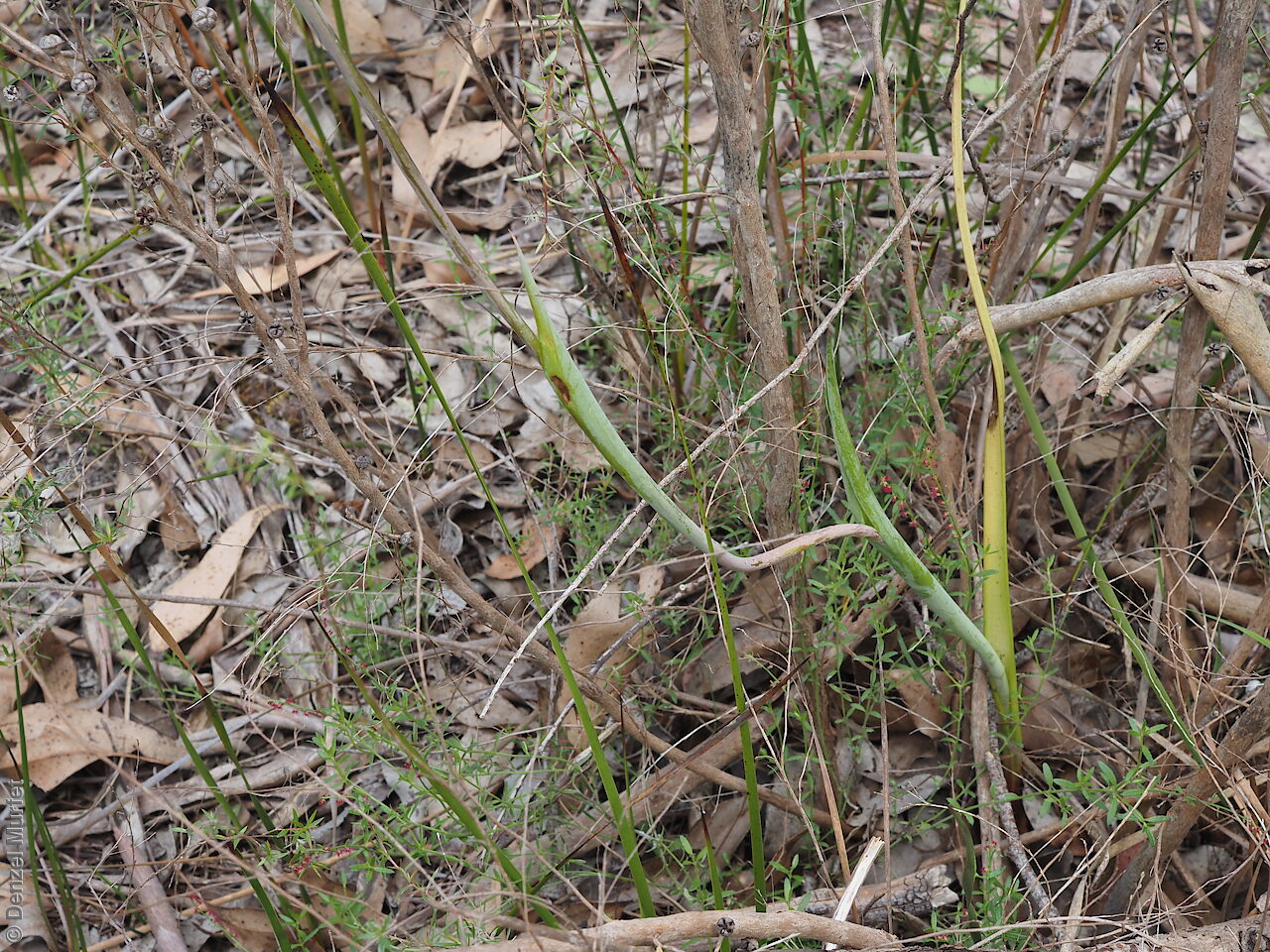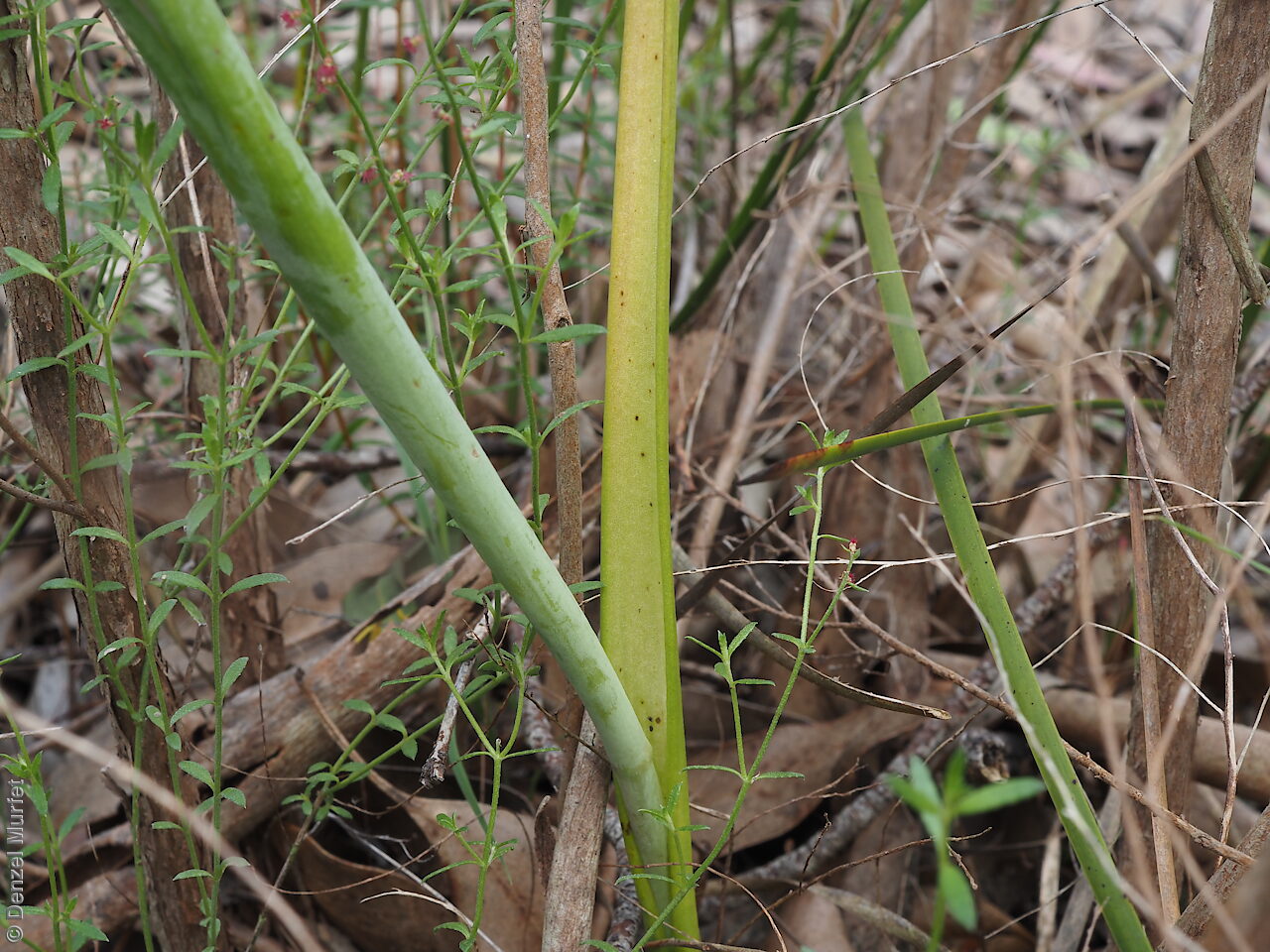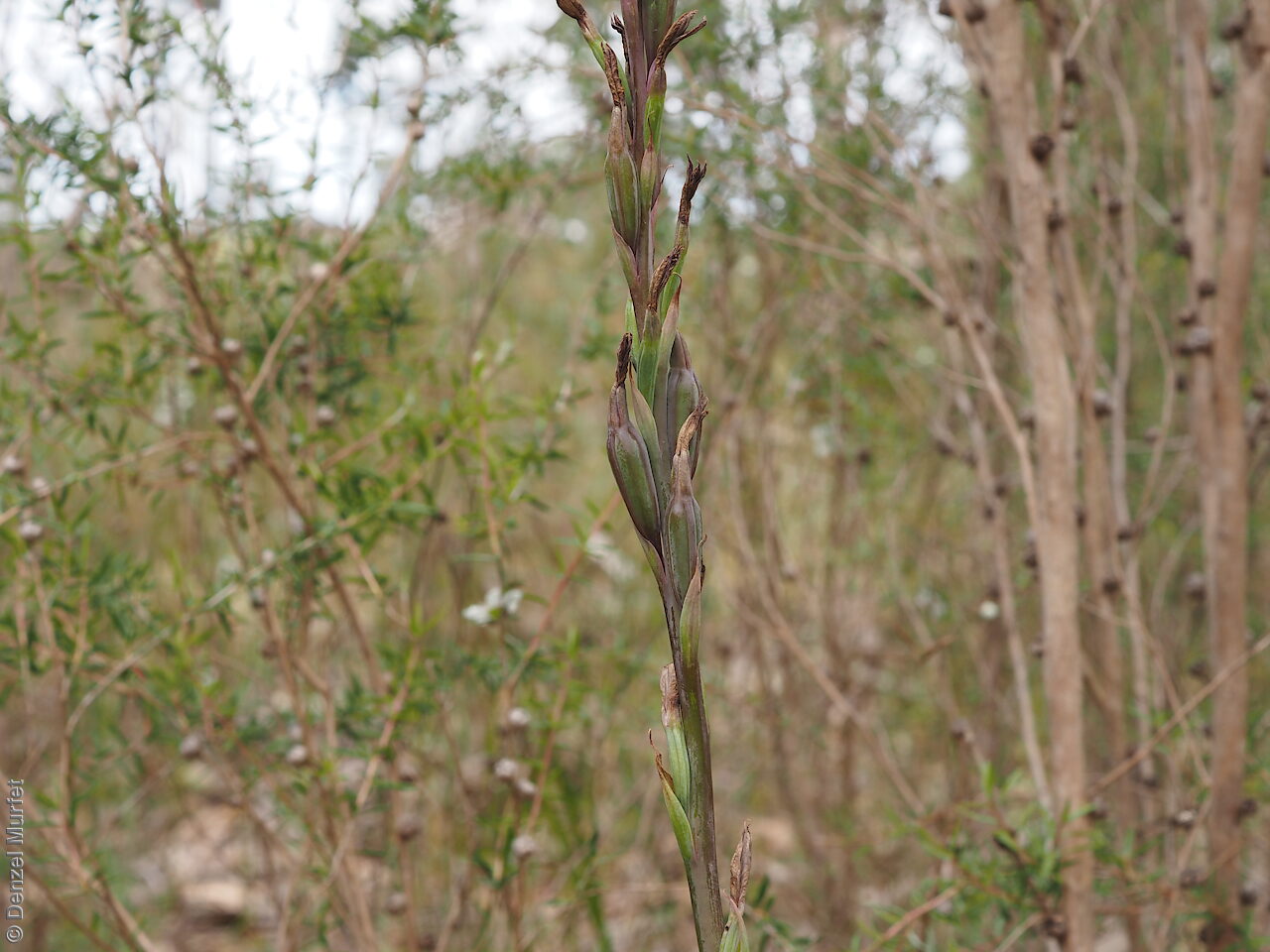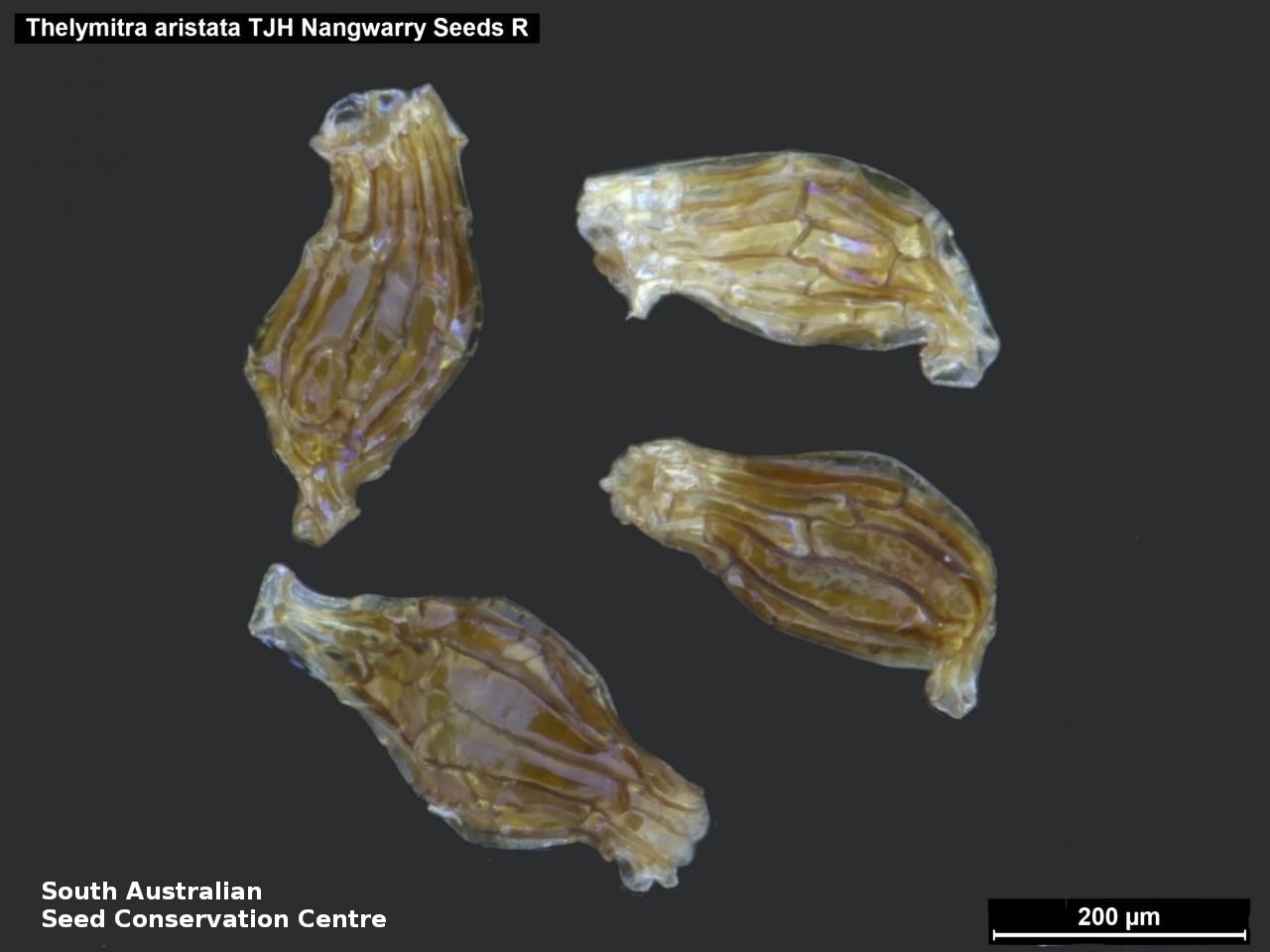







Botanical art
Common names
Giant Sun-orchid
Great Sun-orchid
Etymology
Thelymitra from Greek 'thelys' meaning a bishop and 'mitra' meaning a headwear, hat, hence a bishop’s mitre; referring to the sometimes plumed or decorated wings of the column, which is usually produced behind and over the anther in a hood-like projection. Aristata from the Latin 'arista' meaning awned; referring to the floral bracts which are abruptly contracted into long acuminate points.
Distribution and status
Found in the south-east in South Australia, north of Mt Gambier, growing in clay or gravel soils in forest or scrubland around swamp margins in damp sands. Also found in New South Wales, Victoria and Tasmania. Native. Endangered in South Australia. Common in the other states.
Herbarium regions: Northern Lofty, South Eastern
NRM regions: Northern and Yorke, South East
AVH map: SA distribution map (external link)
Plant description
Grows to 95 cm tall with up to 40 large flowers. Single basal leaf is linear-lanceolate to lanceolate to 35 mm long and 22 mm wide, leathery, often spotted or blotched. Flowers are large blue, lilac to purple, tepals to 25 mm long, column is white to blue with dense white hairs on the lateral lobes. Flowering between September and November. Fruits are brown papery ellipsoid capsule. Seeds are very small dark brown ellipsoid seed with an ovoid translucent brown mesh-like covering.
Seed collection and propagation
Collect seeds between December and February. Collect fat capsules as they start to dry and turn brown. Pods will split and release the seeds quickly and will require monitoring. To increase the chances of collecting mature pods, it is recommended that a small breathable bag (ie. Organza bags) be used to enclose the developing capsules. Place the capsules in a container that will hold fine seeds and leave to dry for a few weeks or until the capsule split. Then carefully hold the capsule and tap it gently to release the seeds. Store the seeds with a desiccant such as dried silica beads or dry rice, in an air tight container in a cool and dry place, refrigerator or in liquid nitrogen.
| Location | No. of seeds (weight grams) | Number of plants | Date collected | Collection number Collection location | Date stored | % Viability | Storage temperature |
|---|---|---|---|---|---|---|---|
| BGA | 1,230,000 (1.555 g) | 11-Dec-2013 | T. Horn South Eastern | 1-Nov-2016 | 86% | -80°C | |
| BGA | 2,090,000 (2.655 g) | 45+ | 6-Jan-2014 | T. Horn South Eastern | 1-Nov-2016 | 77% | -80°C |
Number of plants: This is the number of plants from which the seeds were collected.
Collection location: The Herbarium of South Australia's region name.
% Viability: Percentage of filled healthy seeds determined by a cut test or x-ray.